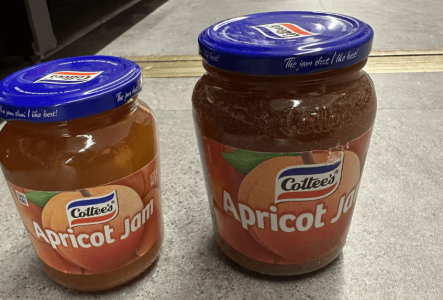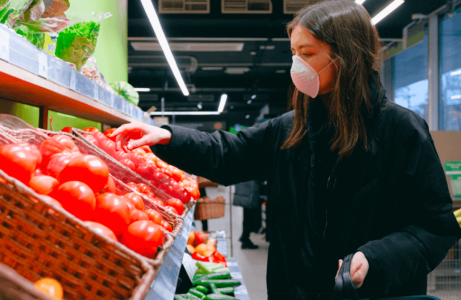Shrinkflation hits Cottee's jam, and customers are outraged!
- Replies 9
Have you been struggling with your magnifying glass and notepad lately, trying to work out if your everyday items have been shrinking?
Don't worry, you can put those detective tools down, members! We've done the heavy lifting to investigate the latest wave of 'shrinkflation'.
Most of you may already be acquainted with this term. Still, for the uninitiated, shrinkflation occurs when manufacturers and sellers reduce the size of their products while maintaining the same prices, or in some cases, even raising them!
It's a cunning manoeuvre, allowing them to skim a little extra profit without the unsuspecting shopper batting an eye.

The latest victim of this shady scheme is none other than the iconic Cottee's Jam. We know it's hard to believe that such a beloved, versatile, and downright scrumptious spread could be caught up in this mess.
Here's the scoop: according to some shoppers, the 500g jar of Cottee's apricot jam, priced at a reasonable $3, has mysteriously vanished from the shelves. In its place, a 375g jar has emerged, claiming the limelight.
That doesn't sound so bad, right? Well, hold onto your toast because this downsized jar comes with a not-so-sweet price tag of $2.80.
Now, let's put on our detective hats and crunch some numbers. That's a reduction in the size of nearly 25% for an almost identical price! It's like buying a ticket to a full-length movie and discovering you only get to watch three-quarters of it. Talk about a jammed-up situation!
When the two sizes were compared by a shopper in-store, a heated conversation about 'shrinkflation' erupted on a popular forum website.
One discerning shopper wrote alongside an image, 'The old 500g Cottee's jam was $3 at my local Woolworths. The new 375g jars are $2.80. The old 500g jar got put on clearance and is completely gone forever. Buy them while you can.'
Another user commented on the situation, saying: 'Just discovered this today and made a comment to the staff member that they're probably charging the same price for the smaller item. Absolutely criminal that it's more than 1/5th smaller but still almost the same price.'
A third added: 'Infuriating thing is that when the economic slump passes, none of these "strategies" will be reversed.'

It's an issue that is unfortunately all too common these days, and it's affected a wide range of products. For example, garlic granules from Masterfoods still cost $3.15, but their size has been reduced from 50g to 45g. Ritz original crackers have also been reduced from 300g to 227g, but the price is still at $3.50.
Even chocolate lovers are feeling the pain of 'shrinkflation' too; Lindt maxi carrots cost a whopping $17 for 354g, and though the price didn't budge last year, the treat was a whole 20g over its current size.
Woolworths Macro organic tomato chutney has also seen a reduction of 25g, with their jars now coming at 250g each. But the price has unfortunately inched up to $5. When asked to comment, Woolworths blamed the downsizing on wholesale costs.
To find out the products affected by shrinkflation last year, check out our article here.

Shrinkflation isn't a fresh trick up manufacturers' sleeves; it has been an ongoing phenomenon for years. The motivation behind this practice stems from companies' cost-cutting strategies, as they strive to maintain competitive prices in the face of rising inflation.
A multitude of factors can be attributed to shrinkflation, spanning from the influx of low-cost imports to unfavourable exchange rates, combined with escalating operational expenses and surging energy prices.
When substantial changes in production costs occur, companies often opt to downsize their packaging rather than directly increase the price, subtly passing on the burden to consumers.
In recent times, we've witnessed a surge in shrinkflation, propelled by mounting costs of raw materials, transportation, and fuel. As companies grapple with these financial challenges, they may resort to reducing the size of their products as a means to save on packaging expenses, streamline their production processes, or as part of a brand overhaul.
After all, it's much easier to slip a downsized item under the radar than to face the scrutiny of consumers who notice a straightforward price hike. Whatever the cause, shrinkflation is a reality, and it's likely to continue for the foreseeable future.
Now it's time for the big question for you, folks: what would you prefer? Pay more money for the same size, or pay the same price for a smaller size? Share your opinions in the comments section!
Don't worry, you can put those detective tools down, members! We've done the heavy lifting to investigate the latest wave of 'shrinkflation'.
Most of you may already be acquainted with this term. Still, for the uninitiated, shrinkflation occurs when manufacturers and sellers reduce the size of their products while maintaining the same prices, or in some cases, even raising them!
It's a cunning manoeuvre, allowing them to skim a little extra profit without the unsuspecting shopper batting an eye.

A conversation about 'shrinkflation' sparked on a popular forum website after the two sizes of Cottee's jam were compared in-store. Credit: Reddit.
The latest victim of this shady scheme is none other than the iconic Cottee's Jam. We know it's hard to believe that such a beloved, versatile, and downright scrumptious spread could be caught up in this mess.
Here's the scoop: according to some shoppers, the 500g jar of Cottee's apricot jam, priced at a reasonable $3, has mysteriously vanished from the shelves. In its place, a 375g jar has emerged, claiming the limelight.
That doesn't sound so bad, right? Well, hold onto your toast because this downsized jar comes with a not-so-sweet price tag of $2.80.
Now, let's put on our detective hats and crunch some numbers. That's a reduction in the size of nearly 25% for an almost identical price! It's like buying a ticket to a full-length movie and discovering you only get to watch three-quarters of it. Talk about a jammed-up situation!
When the two sizes were compared by a shopper in-store, a heated conversation about 'shrinkflation' erupted on a popular forum website.
One discerning shopper wrote alongside an image, 'The old 500g Cottee's jam was $3 at my local Woolworths. The new 375g jars are $2.80. The old 500g jar got put on clearance and is completely gone forever. Buy them while you can.'
Another user commented on the situation, saying: 'Just discovered this today and made a comment to the staff member that they're probably charging the same price for the smaller item. Absolutely criminal that it's more than 1/5th smaller but still almost the same price.'
A third added: 'Infuriating thing is that when the economic slump passes, none of these "strategies" will be reversed.'

'Shrinkflation' refers to paying the same or more for a product despite getting less of it. Credit: Pexels/Anna Shvets.
It's an issue that is unfortunately all too common these days, and it's affected a wide range of products. For example, garlic granules from Masterfoods still cost $3.15, but their size has been reduced from 50g to 45g. Ritz original crackers have also been reduced from 300g to 227g, but the price is still at $3.50.
Even chocolate lovers are feeling the pain of 'shrinkflation' too; Lindt maxi carrots cost a whopping $17 for 354g, and though the price didn't budge last year, the treat was a whole 20g over its current size.
Woolworths Macro organic tomato chutney has also seen a reduction of 25g, with their jars now coming at 250g each. But the price has unfortunately inched up to $5. When asked to comment, Woolworths blamed the downsizing on wholesale costs.
To find out the products affected by shrinkflation last year, check out our article here.
Key Takeaways
- Cottee's Apricot Jam has become the latest casualty of shrinkflation, as the 500g jar mysteriously disappeared and was replaced by a smaller 375g jar, all while maintaining a similar price.
- Outraged consumers have voiced their frustrations, calling it ‘criminal’ that they are being charged nearly the same price for a product that has been reduced by more than 1/5th in size.
Shrinkflation isn't a fresh trick up manufacturers' sleeves; it has been an ongoing phenomenon for years. The motivation behind this practice stems from companies' cost-cutting strategies, as they strive to maintain competitive prices in the face of rising inflation.
A multitude of factors can be attributed to shrinkflation, spanning from the influx of low-cost imports to unfavourable exchange rates, combined with escalating operational expenses and surging energy prices.
When substantial changes in production costs occur, companies often opt to downsize their packaging rather than directly increase the price, subtly passing on the burden to consumers.
In recent times, we've witnessed a surge in shrinkflation, propelled by mounting costs of raw materials, transportation, and fuel. As companies grapple with these financial challenges, they may resort to reducing the size of their products as a means to save on packaging expenses, streamline their production processes, or as part of a brand overhaul.
After all, it's much easier to slip a downsized item under the radar than to face the scrutiny of consumers who notice a straightforward price hike. Whatever the cause, shrinkflation is a reality, and it's likely to continue for the foreseeable future.
Now it's time for the big question for you, folks: what would you prefer? Pay more money for the same size, or pay the same price for a smaller size? Share your opinions in the comments section!








